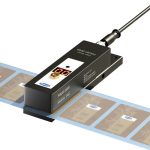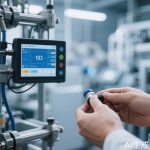In today’s rapidly evolving industrial landscape, the demand for accuracy and reliability has never been higher. High-precision pressure transmitters have emerged as critical components in numerous applications, from manufacturing and energy production to healthcare and aerospace. These sophisticated devices are designed to measure pressure with exceptional accuracy, providing real-time data that is essential for optimizing processes, ensuring safety, and enhancing overall efficiency. As industries continue to push the boundaries of innovation, the role of high-precision pressure transmitters becomes increasingly vital.
What sets high-precision pressure transmitters apart from their conventional counterparts is their ability to deliver measurements with minimal error margins. Utilizing advanced sensing technologies, such as piezoresistive or capacitive sensing elements, these transmitters can detect even the slightest changes in pressure. This level of sensitivity is crucial in applications where precision is non-negotiable, such as in pharmaceutical manufacturing, where exact pressure conditions must be maintained to ensure product quality, or in oil and gas exploration, where accurate pressure readings can prevent catastrophic failures.
One of the key advantages of high-precision pressure transmitters is their versatility. They can be customized to meet the specific needs of various industries, whether it’s measuring extremely low pressures in laboratory settings or withstand harsh environments in industrial plants. With features like temperature compensation, robust housing, and compatibility with a wide range of media, these transmitters offer unparalleled flexibility. This adaptability makes them an invaluable tool for engineers and technicians who require reliable data under diverse conditions.
Moreover, the integration of digital communication protocols, such as HART, Foundation Fieldbus, or Profibus, has revolutionized the functionality of high-precision pressure transmitters. These protocols enable seamless communication with control systems, allowing for remote monitoring, diagnostics, and calibration. This not only reduces downtime but also enhances predictive maintenance capabilities, ensuring that potential issues are addressed before they escalate. The result is a more efficient and cost-effective operation, with minimized risks and maximized productivity.
In the realm of sustainability and energy efficiency, high-precision pressure transmitters play a pivotal role. By providing accurate data on system performance, these devices help optimize energy consumption, reduce waste, and lower carbon footprints. For instance, in HVAC systems, precise pressure measurements ensure that heating and cooling operations are running at peak efficiency, contributing to significant energy savings. Similarly, in renewable energy applications, such as wind turbines or solar plants, these transmitters help maintain optimal performance, supporting the global transition to cleaner energy sources.
As technology continues to advance, the future of high-precision pressure transmitters looks promising. Innovations in materials science, wireless connectivity, and artificial intelligence are set to further enhance their capabilities. Smart transmitters with self-diagnostic features and predictive analytics will become the norm, offering even greater reliability and ease of use. For businesses looking to stay competitive, investing in high-precision pressure transmitters is not just a choice—it’s a necessity for driving innovation and achieving operational excellence.




Leave a Message